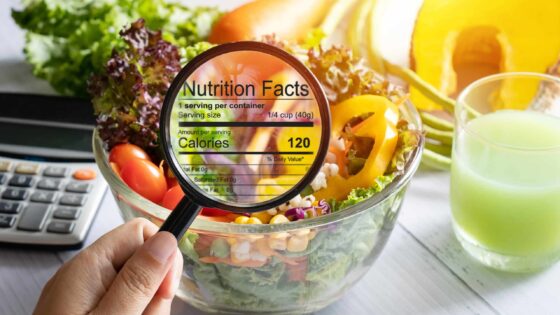
Welcome to National Nutrition Month! This pivotal celebration reminds us each year of the importance of making better food choices and developing sound eating habits. As you immerse yourself in the wealth of information on this topic, it’s essential to remember that nutrition should not be limited to merely what we eat; how we source our food is equally vital.
A trip to the grocery store is an opportunity to transform your health, but it can also be overwhelming. An organized and focused grocery shopping experience can lead to a more manageable and successful transition to a healthier diet. To help you make the most of your weekly grocery run, we’re unloading a cart full of strategies for smarter shopping.
Start with a Plan: The Power of Meal Prepping
Before even setting foot inside a store, the most powerful weapon in your shopping arsenal is a solid meal plan. Preparation is key to avoiding the impulse buys and high-sugar, high-fat foods that are often the downfall of the well-intentioned shopper.
How to Meal Plan Effectively
- Choose one day a week to plan your meals and snacks.
- Take an inventory of what you already have in your pantry and refrigerator.
- Consider your schedule—plan for quick, easy meals on busy days.
- Make a detailed shopping list to ensure you only buy what you need.
- Commit to your plan to reduce food waste and save money.
Mastering the Art of Label Reading
Learning to decipher the information on food labels is a skill that pays off in health dividends. Knowing what to look for can help you make informed decisions and distinguish between products that are beneficial and those that are better left on the shelf.
Key Things to Look for on Labels
- Serving Size and Servings per Container: Often, the nutritional values listed are for a single serving. Be mindful of how many servings you’re consuming.
- Nutritional Facts: Pay attention to the calories, fats (saturated and trans), cholesterol, sodium, and sugars. Aim to limit or avoid foods high in these.
- Ingredients List: This can reveal hidden sugars, unhealthy fats, and artificial additives.
The Perimeter Protocol: Exploring the Produce and Fresh Sections
The age-old advice of “shop the perimeter” holds true for most grocery stores. This area is typically where you’ll find the freshest, least processed foods.
Load Up on Vegetables and Fruits
- Aim for a colorful variety to get a wide range of vitamins and minerals.
- Fresh is best, but frozen or canned without added sugars or salt are good alternatives.
- Choose fruits and vegetables you enjoy—they’re more likely to make it to your plate.
Navigating the Aisles: Making Informed Choices
While the perimeter is usually the healthiest part of the store, the aisles offer essential staples and some products that can be part of a balanced diet.
The Good and the Bad in the Dry Good Aisles
- Look for whole-grain varieties of bread, cereals, and pastas with minimal processing and added sugars.
- Consider beans, lentils, and other legumes for a protein and fiber boost that’s also cost-effective.
- Beware of processed items with long ingredient lists or those high in added sugars and unhealthy fats.
Crack the Code on Canned and Packaged Foods
Canned and packaged goods can be convenient, but they often come with a side of added sugars, sodium, and preservatives.
Smart Strategies for Packaged Foods
- Choose “no salt added” or “low sodium” varieties of canned vegetables.
- Opt for foods packed in water, not syrup.
- Compare different brands to pick the one with the least amount of added sugars and the most natural ingredients.
The Art of Stocking Your Kitchen
Your kitchen is the front line in your battle for better nutrition. What you keep in your kitchen greatly influences what you consume.
Stock ‘Smart’ in Your Kitchen
- Keep your kitchen stocked with the staples and ingredients from your meal plan.
- Consider keeping a supply of quick, healthy snacks like nuts, fruits, and whole-grain crackers.
- Avoid keeping unhealthy temptations in the house.
- Invest in storage solutions to keep produce fresh and in plain sight.
- Regularly clean and organize your fridge and pantry to ensure healthier items are more accessible.
In Conclusion
Your weekly trip to the grocery store can be a powerful gateway to a healthier lifestyle. Armed with a plan, mindful label reading, and a strategic approach to shopping, you can transform this mundane task into a celebration of nutrition. This National Nutrition Month, commit to investing in your health through the foods you choose to bring home. Your body and mind will thank you for it. For more health-related articles, visit www.FamilyFirstUrgentCareConroe.com.
- Navigating Flu Season: When to Visit Urgent Care - October 9, 2024
- Preventive Measures and Wellness Checks at Your Primary Care - October 4, 2024
- The Role of Primary Care in Chronic Disease Management - September 23, 2024



